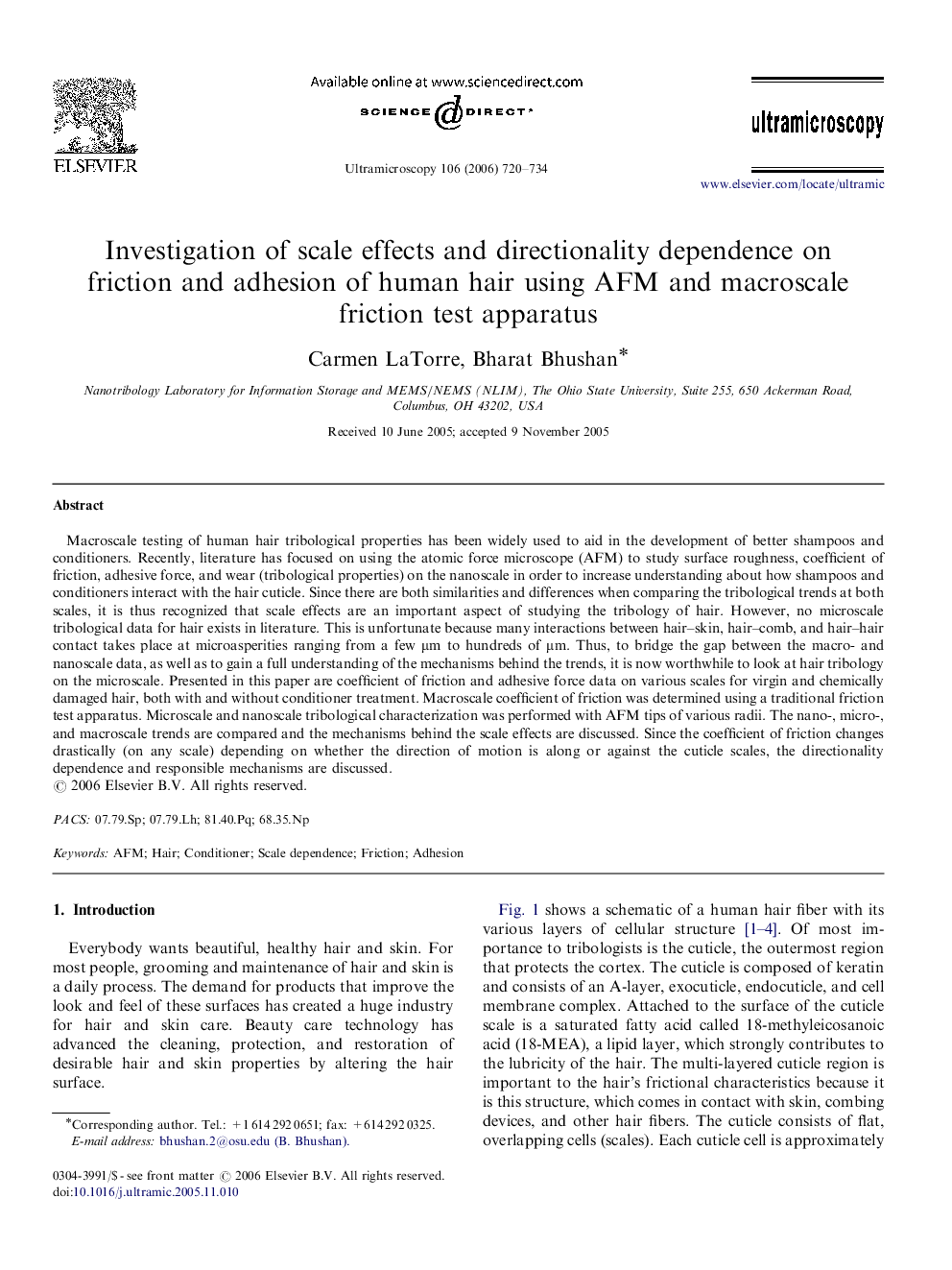| Article ID | Journal | Published Year | Pages | File Type |
|---|---|---|---|---|
| 1679146 | Ultramicroscopy | 2006 | 15 Pages |
Macroscale testing of human hair tribological properties has been widely used to aid in the development of better shampoos and conditioners. Recently, literature has focused on using the atomic force microscope (AFM) to study surface roughness, coefficient of friction, adhesive force, and wear (tribological properties) on the nanoscale in order to increase understanding about how shampoos and conditioners interact with the hair cuticle. Since there are both similarities and differences when comparing the tribological trends at both scales, it is thus recognized that scale effects are an important aspect of studying the tribology of hair. However, no microscale tribological data for hair exists in literature. This is unfortunate because many interactions between hair–skin, hair–comb, and hair–hair contact takes place at microasperities ranging from a few μm to hundreds of μm. Thus, to bridge the gap between the macro- and nanoscale data, as well as to gain a full understanding of the mechanisms behind the trends, it is now worthwhile to look at hair tribology on the microscale. Presented in this paper are coefficient of friction and adhesive force data on various scales for virgin and chemically damaged hair, both with and without conditioner treatment. Macroscale coefficient of friction was determined using a traditional friction test apparatus. Microscale and nanoscale tribological characterization was performed with AFM tips of various radii. The nano-, micro-, and macroscale trends are compared and the mechanisms behind the scale effects are discussed. Since the coefficient of friction changes drastically (on any scale) depending on whether the direction of motion is along or against the cuticle scales, the directionality dependence and responsible mechanisms are discussed.
